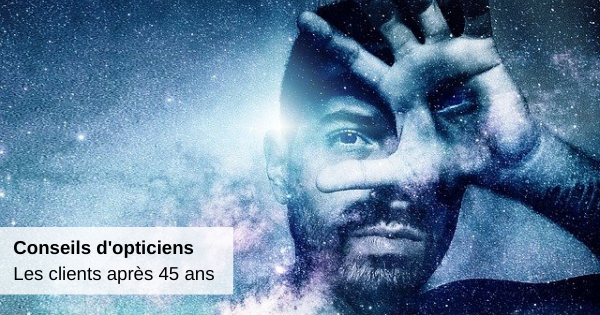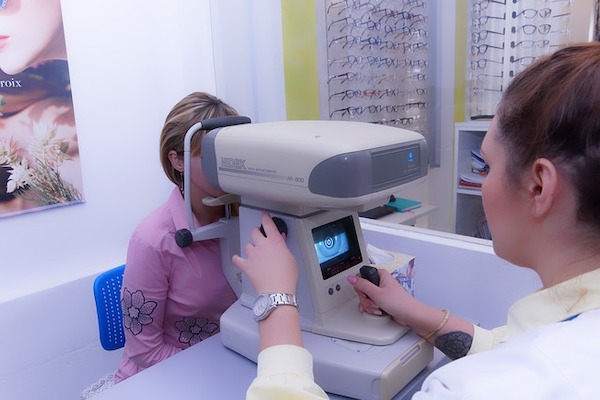Opticians: advising your clients after 45 years

In almost all health issues, there are times in your life when you need to be extra vigilant. When it comes to visual health , we often focus on the average age of 45. Beyond this threshold, the tests carried out consist in checking visual acuity , but also eye pressure and the health of the retina . As healthcare professionals, here are some optical tips after 45 years.
Optical advice after 45 years: how is eyesight changing?
It is around this age of 45 that presbyopia appears, sometimes a little earlier. This natural evolution of vision affects between 30 and 40 million people in France. The lens of the eye loses some of its elasticity and a difficulty of accommodation follows .
If this development is not serious and stabilizes around the age of 60 , other problems may arise around this age, with increased risk. This is the case with glaucoma , AMD and diabetic retinopathy.

The first piece of advice to give to your customers is therefore to get tested regularly. From the age of 45, it is considered that the ophthalmic appointments should be closer. Between 45 and 60, they should be at least once every two years . After 60 years, we recommend that you go there every year .
In-store advice
Opticians, it is your job to help your customers with aging eyes see better. Often times, a client may worry that their vision is declining with age. The refusal to age is then felt. Do not hesitate to reassure them on several points.

Indicate to your clients that any pre-existing visual defects have no influence on the onset and development of their presbyopia. Also remind them that this is not a disease or a defect, but a natural evolution of the visual mechanism .
Then direct them to existing devices to correct presbyopia:
- Simple reading glasses (or magnifying glasses) will only be used for near vision. Only the function of a magnifying glass is fulfilled: impossible to see clearly beyond the near vision. The client will have to remove his glasses for intermediate or far vision.
- The mid-distance lens will allow the wearer to see better up close, but also in intermediate vision. This device helps reading and distinguishing people and objects close to the wearer. But this device will not be of any help for far vision, the wearer will have to remove these glasses when driving, for outdoor activities or even for watching television.
- Progressive lenses are today the most comfortable and effective solution to correct presbyopia. They provide ideal correction and comfort at any distance. No need to change pairs to switch from one vision to another.
 @ optiquelafayette [/ caption]
@ optiquelafayette [/ caption]
Today, more than 60% of presbyopes use the progressive lens solution. But switching to the progressive lens requires some adaptation time. To do this, do not hesitate to explain to your customers how these glasses work. The gradual transition from one vision to another will allow them to practice any activity without difficulty.
[ =]


